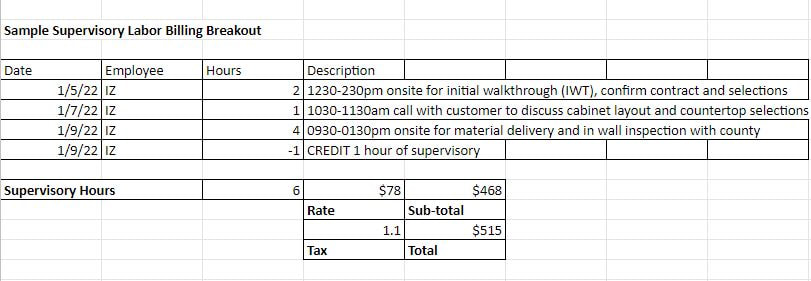 Have you ever heard, “You should always get three bids,” in reference to determining the cost of a home improvement project? While it may sound like good advice, it often overlooks a more important factor and may not be in your best interests in many situations. In this article, we want to discuss some of the reasoning behind this thought process as well as whether it is true when dealing with a property damage insurance claim. Most people think about the price when exploring home improvement options. Price is an important factor, but it’s not the only one (see our prior article on determining the cost of remodeling). When dealing with an insurance claim restoration, renovation, or repair, price is one of the least important variables. Your adjuster or insurance agent (broker) may advise you to get three estimates for your insurance claim, but before you do so you should ask these questions: Are 3 Estimates Necessary For An Insurance Claim?For the majority of property damage claims, the two initial questions are
If you have a broken pipe and water spewing into your home, you likely will call a plumber to shut the water off. Do you need three plumbers to tell you what it costs before you decide who to hire? More than likely a homeowner in this situation will hire whoever can get there first. Expedience precedes cost and is the best value for this phase of the work to be completed. The value in this situation is rapid response leading to reducing further damage by addressing the immediate threat, e.g. the broken pipe, and shutting the water off. If that call is at 2 am or interrupts the plumber's current workload (even during business hours), it is going to come at a premium. Your homeowner’s insurance policy typically owes to cover legitimate and reasonable costs for services rendered. This may not include repairing what is considered the source of the loss but usually extends to damages resulting from the covered (or non-excluded) source. Whether your insurance is paying for it or you are, shutting off the water is in the best interests of all parties. Again, the scope and the value precede the price. A reasonable cost for this emergency service is subject to some interpretation but would primarily mean that it is consistent with that service provider's normal costs in similar situations. It would not mean that another plumber told a caller over the phone that their price is 20% less or some national pricing average showed a cost of 30% less. In an emergency situation, getting three bids creates less value for all parties and makes the issue worse by allowing more water, by the minute, to impact the structure. Are 3 Bids Recommended for Insurance Claims?The question insurance has to answer, by reviewing your policy language with you, is whether the source was specifically excluded by your policy or whether there are specific exclusions for your scenario. As a general rule of thumb, damages that are “sudden and accidental” should be covered. It is recommended to hire a qualified local contractor who can assist you to document the source and extent of damages. Having an independent source provide thorough and accurate information to you as the homeowner and present that information to your insurance company is a value to all parties. If an insurance representative advises that you should acquire three bids, it would be appropriate to ask them why. If the contractor you are working with is qualified, has been thorough, and presents a plan that makes sense to you, it only serves to delay the process by getting two additional, potentially competing bids. Xactimate is an estimating software that serves as a common language between insurance companies and experienced restoration contractors but it serves as a benchmark, not an authority, for presenting the scope and cost of a project. In a restoration situation, getting three bids creates less value for the homeowner by delaying the response and returning the property to pre-loss conditions. Are 3 Estimates Helpful For Insurance Claims?Why would an insurance company want three estimates? Is it to create an average cost or to provide them the option to settle for the lowest price? Whether insurance is involved in a renovation project or not, price is not the only factor and often should be the least important one. The lowest, middle or even the most expensive price has no bearing on the best value. As a homeowner, you should be asking who is best qualified to assist me with my needs? If the damages are extensive, you are going to be working with this contractor for several months, so it is important to hire the professionals that you are most comfortable and confident in. The right price is what a willing buyer agrees to pay a willing seller. The focus should be on developing a clearly agreed-upon scope of work and from that establishing a legitimate and reasonable cost for goods and services. Everyone knows the cheapest isn’t always the best, but the most expensive or the middle of the three has no bearing on value either. Price and value are not synonymous when selecting the right service provider. In a repairs situation, getting three bids creates less value for the homeowner by delaying the process of returning the property to pre-loss conditions.
0 Comments
During a recent three minute video, that I recorded while I was taking a walk, I discussed some thoughts on the topic of labor supervisory hours for insurance claims. Most of my comments were geared towards the repairs or reconstruction side of the insurance claims process, but the principles apply to water and fire damage mitigation as well. Supervisory Labor for ConstructionIn the construction realm, supervisory labor (i.e. project management time) is something that is regularly charged for, but it is embedded in the lump sum pricing. When a consumer hires a contractor to remodel their kitchen, they likely will receive a one page document that says,
This is lump sum pricing and it's common. There is nothing out of the ordinary or wrong with this pricing model or estimating presentation. Project Management Time for Insurance ClaimsFor the typical insurance claim, carriers prefer to see estimates itemized in what's referred to as unit or standardized pricing. Often an estimating program called Xactimate is utilized to create these estimates. In this format, the scope and pricing are presented as line items. The bid is build line by line and room by room. In unit, or standardized pricing, those items like supervisory labor, overhead, and profit are not embedded in the cost. Supervisory is separated out as an additional line item while overhead and profit are factored as markups at the end of the estimate similar to the way sales tax is accounted for. Again, in construction, these charges are normal but they are presented in a different manner. For an insurance project, since they are listed separately, it gives the impression that they are up for discussion or optional; this is not the case. The charges are common, but the format is not. It's important for the consumer and the contractor to understand these unique elements when working through an insurance claim. Project Management is a Direct CostSupervisory labor, or project management time, is the primary focus of this article. Even contractors misunderstand that this element is not an overhead cost, it is a direct cost of the project. Overhead costs are considered indirect costs. These are real costs for every construction business but they are are aspects of business that are not specifically attributed directly to the individual job. Examples of indirect costs (aka general overhead) might include your business licensing, company insurance, office rental, administrative labor, utilities, etc. All items that must be accounted for or the company will not be able to pay their bills and won't be in business for long. On the other hand, supervisory labor includes the direct costs of having a representative on the work site, meeting with the client, lining out the project, making sure materials are properly ordered, and that the work is progressing along it's key intervals. These are direct costs. The company pays for their managers, supervisors, foreman, and safety personnel to be onsite. These costs should be charged for and not lumped into general overhead. Charging for Project ManagementSupervisory labor is a direct cost that should be accounted for and approved on the front end. It is common to factor supervisory as a percentage of the total estimated hours or to be tallied and charged at the end of the project. The charges and factor should be agreed to in writing at the project outset. On a large project, it is recommended to send regularly updates on the hours applied so that the total hours and charges are not a surprise to all parties at project completion.
An example of how a contractor would present their charges for project management, including any applicable credits, might look like this: |
Words
The DYOJO - helping contractors shorten Archives
May 2024
Categories
All
EstimatingMarketingInsurance ClaimsLeadership |
|
| |||||||


 RSS Feed
RSS Feed
